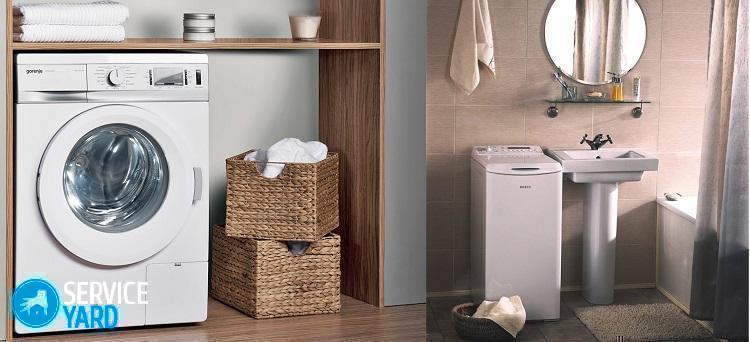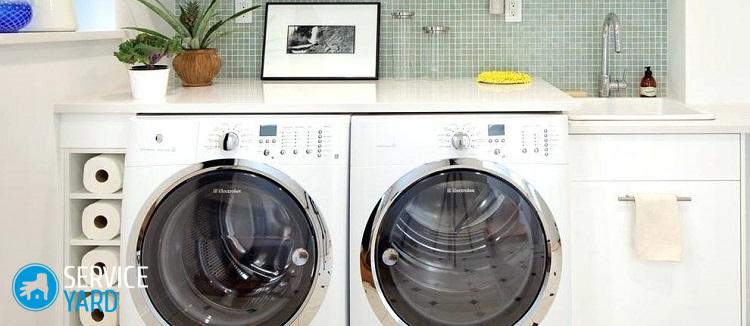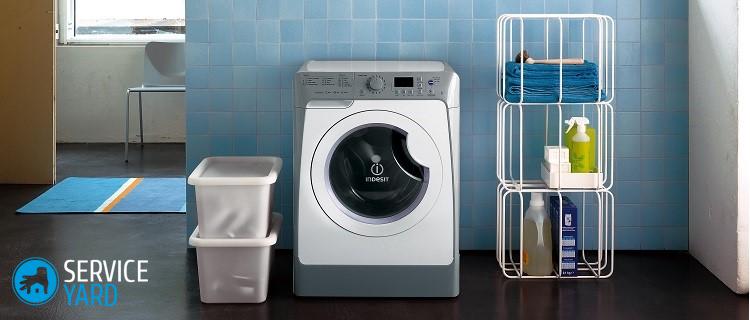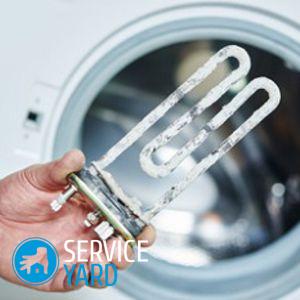Replacing the bearing in the washing machine

Today, such a household appliance as a washing machine can be found in almost every residential apartment. If your washer began to make unnecessarily loud sounds during operation, you hear a constant knock of a drum, then most likely there are problems with the bearing. In this article, we will tell you how to replace a bearing in a washing machine, because this procedure can be done independently.
to contents ↑Where to begin?
Before you start disassembling and repairing the washing machine, you need to take care of the preparation of all the necessary tools and accessories. To replace the bearing of the washing machine, you will need the following tools:
- pliers;
- hammer;
- Phillips and flat head screwdrivers;
- set of open-end wrenches;
- silicone based sealant;
- grease for bearings or lithol;
- metal rod.
It is also necessary to purchase an oil seal and a pair of bearings at a household appliance store or spare parts for washing machines.
to contents ↑Important! If possible, try to buy original parts for your model’s washing machine, because the manufacturer guarantees the longest possible life.
Dismantling the washing machine
To replace the drum bearing of the washing machine, it is necessary to disassemble the washing machine almost completely. This procedure is carried out according to the following algorithm of actions.
Dismantling the top cover
Begin disassembling the washing machine by removing its top cover. To safely remove this part, do the following:
- On the back of the equipment, unscrew the two fixing screws.
- After removing the fasteners, slide the cover back and lift it up.
- Leave the removed part a little aside.

Removing the top and bottom panels
Now it's time to dismantle the top dashboard of your washer. To safely disconnect it, follow the following procedure:
- Remove the tray for washing gel and powder - extend the structure, remove it by pressing the special plastic button.
- Set the powder tray aside.
- Using a screwdriver, unscrew the screws that secure the dashboard to the washing machine.
Important! Depending on the model features of the washer, fasteners may be a different number. However, one of them is necessarily on the right side, and part is in place of the powder collector that you removed.
- Carefully remove the panel so that the wires connecting the control board are visible.
- Remove all chips with wires from the sockets.
- Set the top dashboard aside.
Important! Mark the chips with wires and their sockets with a marker or in another way, so that when assembling the unit do not mess up the order of their connection.
The bottom panel is removed by pressing a flat screwdriver on the fastening latches. Thus, you can easily remove the part and be able to place it next to other components.
Important! If you already have access to the heating element, carefully inspect it. You might need some additional tips to help. descale in the washing machine.

Cuff removal
To remove the front panel of the washing machine and gain access to its drum, it is necessary to dismantle the cuff, which is represented by an elastic band.This part connects the tank and the front panel of the device.
The cuff mount provides a collar that must be carefully removed. To do this, follow these recommendations:
- After running around the perimeter of the rubber insert with your hand, determine the location of the small spring.
- Pry off the part with a flat screwdriver, remove along with the clamp.
- Remove and refill the front edge of the cuff inside the tank.
Important! Depending on the model of your equipment, the necessary measures for dismantling and installing the gum may slightly differ. Please note that if it is thoroughly covered with mold or rotten, then it makes sense to put a new one during the repair.
In this case, use the detailed instructions on our website to replacing gum on washing machines different models.
Front panel removal
Now, access to the washing machine tank is prevented only by its front panel, which is disconnected as follows:
- Close the hatch of the washer.
- Unscrew the screws that secure the panel and are located in its lower and upper parts.
- Carefully remove the panel from the special mounting hook.
- Disconnect the wire that connects the part to the lock on the loading door.
- Place the front panel of the washing machine next to the rest of the removed accessories.

Tank disconnect
Now you see the tank of the washing machine, however, to get free access to it, you still have to remove the top panel of the device with the powder box. To do this, follow these tips:
- Unscrew the bolts holding the filler valve, which are located behind the washing machine.
- Remove all screws that hold the top panel.
- Disconnect wires and branch pipes which do not allow to remove a detail freely.
- Set the top panel aside.
- To remove the tank, you will also need to disconnect the drain pipe. To do this, first unscrew the clamp.
Important! A certain amount of water may remain in this part, which was not drained by the system at the end of the last wash, so prepare a rag in advance to eliminate a small puddle.
- Disconnect all the wires of the heating element - TENA, which can be located both in front and in the back of the washing machine. If necessary, unscrew the back cover.
- To make the tank lighter and easier to move, remove the upper and lower counterweights.
- The final step is to disconnect the shock absorber, the fixing bolts of which are unscrewed with a wrench.
- Now you can carefully remove the washing machine tank from the remaining elements of its housing.
Important! Without counterweights, the washing tank is light enough, so lift it with one hand while you unfasten the mounting springs.

Tank disassembly
To change the bearing in the washing machine, it is necessary to divide the tank into two parts by pulling out the drum.
Important! The fastening of the tank parts, depending on the model features of household appliances, is carried out using latches or bolts that are located around the perimeter of the structure.
Disconnect the front of the tank and clean it of accumulated debris during operation.
To separate the drum from the back of the washing machine tank, remove the pulley. This procedure is performed as follows:
- Using a wrench, unscrew the bolt attaching the pulley to the drum axis.
- Remove the pulley and set it aside.
- Screw the bolt all the way back into the shaft.
- With low intensity, tap the shaft with a hammer, disconnecting it from the drum.
Important! if the shaft does not lend itself, then unscrew the standard bolt and replace it with another, which will not be a pity to throw out in case of deformation. After that, you can increase the strength of tapping.
- Drown the shaft to the bolt hat.
- Unscrew the bolt and pull the drum out of the washing machine tank.
Important! Check the shaft and sleeve for wear.If their operation is clearly visible, then in addition to the bearing, it will be necessary to replace the crosspiece. This procedure significantly affects the cost of repairs, but provides the equipment with a long and trouble-free operation.

Replacing the drum bearing of the washing machine
Before replacing the bearing in the washing machine, which is located in the rear wall of the drum, it is necessary to remove the stuffing box. To do this, pry the part with a flat screwdriver and carefully remove it.
Important! The oil seal is a very significant component of the washing machine, which protects the bearings and the entire mounting assembly from moisture, prevents rapid wear due to corrosion damage.
It's time to knock out both bearings, for which you need to do the following:
- Attach a pencil-shaped metal rod to the bearing.
- With a sharp movement of the hammer, strike on its surface.
- Cross to cross, move the rod over the area of the bearing and continue tapping with a hammer.
- This removes both parts.
Important! The large bearing should be knocked out from the outside, and the small one from the inside of the tank. Since the tank is usually quite fragile, it is best to carry out the procedure by resting it on one knee.
- After removing the used bearings, clean the back cover and the seats for new parts. Try to remove all dirt and bring the surface of the tank to a shine.
- Remove the new bearings from the packaging and, having inserted the smaller part, carefully hammer it with a hammer. The component should become all the way, after which the sound of knocking will become more sonorous.
- Carry out similar actions with a large bearing mounted on the other side of the tank.
- Filling the stuffing box with water-resistant grease specially designed for washing machines or “Litol-24”, replace it.
- Now you can assemble the washer by repeating all the steps in the reverse order.
to contents ↑Important! Depending on what kind of picture appeared before you after a complete analysis of the equipment and inspection of its internal parts, as well as on the service life of the technician, there may be an option not to repair, but to buy a new washing machine. In this case, to save your own time, use our reviews:
Stock footage
In this article, we told you how to replace the bearings in the washing machine with your own hands. We hope that from now on you will not need to address this issue to specialists, and the washing machine will last for many years.







